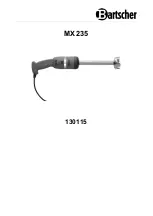
Oscillator
33
RIVAGE PM10 Operation Manual
SOLO
“Solo” is a function that outputs only the signal of a specific input channel or output channel. Only
the signal of the channel whose [CUE] key is pressed is output, and the other channels are muted.
The signal of a channel whose [CUE] key is pressed can also be monitored from the CUE OUT
jacks, MONITOR OUT jacks, and PHONES jack.
• SOLO SAFE
As necessary, you can select channels that will not be muted when Solo is performed.
Channel Mode/Bay Mode
You can choose one of two modes: “Channel Mode” which lets you specify the CUE A/B destination
of each channel, and “Bay Mode” which lets you specify the cue destination of each control surface
bay being operated. The choice of Channel Mode or Bay Mode is made in the PREFERENCES page.
• Channel Mode
This mode assumes that one operator is using two cue buses separately. Each channel’s cue
audio destination (Cue A, B, A+B) can specified individually.
• Bay Mode
This mode assumes two operators will operate the system. You can specify the cue destination
(CUE A and B) for each Bay.
The RIVAGE PM10 features two oscillators that output individual sine waves with different
frequencies to the desired channels. Also, LPF and HPF are provided for noise output.
1
Oscillator operation mode
• SINE WAVE
• SINE WAVE 2CH
• NOISE (PINK NOISE/BURST NOISE)
NOTE
Oscillator assignments and on/off switching can also be assigned to a USER DEFINED key.
Bay L
Ch1 2 3
CUE
A
A
B
Bay C
Ch1 2 3
CUE
A
A
B
Bay R
Ch1 2 3
CUE
A
A
B
C
u
e B
(Wedge)
C
u
e A
(Phones)
Bay L
Ch1 2 3
CUE
B
B
B
Bay C
Ch1 2 3
CUE
A
A
A
Bay R
Cue=B
Cue=A
Cue=A
Ch1 2 3
CUE
A A A
C
u
e B
(Phones B)
C
u
e A
(Phones A)
Oscillator
ODD
N
OISE
HPF
LPF
SI
N
E
W
AVE
SI
N
E
W
AVE 2CH
OSC OUT
EVE
N
OSC OUT
or
METER
1
















































